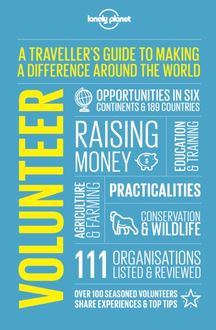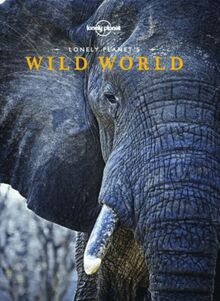-
 Univers
Univers
-
 Ebooks
Ebooks
-
 Livres audio
Livres audio
-
 Presse
Presse
-
 Podcasts
Podcasts
-
 BD
BD
-
 Documents
Documents
-
- Cours
- Révisions
- Ressources pédagogiques
- Sciences de l’éducation
- Manuels scolaires
- Langues
- Travaux de classe
- Annales de BEP
- Etudes supérieures
- Maternelle et primaire
- Fiches de lecture
- Orientation scolaire
- Méthodologie
- Corrigés de devoir
- Annales d’examens et concours
- Annales du bac
- Annales du brevet
- Rapports de stage
La lecture à portée de main
Vous pourrez modifier la taille du texte de cet ouvrage
Découvre YouScribe en t'inscrivant gratuitement
Je m'inscrisDécouvre YouScribe en t'inscrivant gratuitement
Je m'inscrisEn savoir plus
Vous pourrez modifier la taille du texte de cet ouvrage
En savoir plus

Description
Sujets
Informations
| Publié par | Lonely Planet Global Limited |
| Date de parution | 01 septembre 2014 |
| Nombre de lectures | 0 |
| EAN13 | 9781743605820 |
| Langue | English |
| Poids de l'ouvrage | 6 Mo |
Informations légales : prix de location à la page 0,0900€. Cette information est donnée uniquement à titre indicatif conformément à la législation en vigueur.
Extrait
INTRODUCTION
Where in the world is the best place to be today, tomorrow or for your next birthday?
My, I felt smug. The sky was too blue to be true, a spread of cobalt I thought only existed in Technicolor or Photoshop. The historic trail – largely empty, it being before the peak hiking months – was fringed by a golden fuzz of gorse, while surrounding meadows nodded with purples, pinks and fresh greens. Birds were in good voice, singing and zinging from the leafy treetops on a quest to secure a mate. And the days were endless! The sunshine hours stretched beyond 10pm, encouraging late nights on warm-enough outdoor terraces, savouring tapas dishes of (in-season) padrón peppers and a vino tinto or two. Yes, it seemed walking a smidgen of Spain’s Camino de Santiago pilgrimage trail in late May (26 May, to be precise), when it was all wildflowers and long days and holiday-horde free, was the embodiment of right time, right place.
This, of course, is where all travellers want to be, no matter what their cultural or geographical preferences: right time, right place. We all want that sweet serendipity of being there when the Northern Lights are most likely to dance (but, ideally, it’s not too chilly); when the sleepy scruff-bucket town transforms for its once-a-year fabulous fiesta; when a mass mob of whales gathers at the nearby reef; when the climate is just perfect for whatever our chosen adventure. And that’s why this book exists – to help you focus your travels, zooming in on precise dates or periods to ensure some of the very best experiences, be they wildlife migrations, active escapades, raucous festivals or cultural showstoppers.
Perhaps you want to know when to pack your picnic for the prettiest Japanese cherry blossom party (26 March, in case you’re wondering). Or when best to raft the Colorado River through the Grand Canyon (try 16 September, the day after motorboats are prohibited for the year). Maybe you want to spend your Christmas break with baby warthogs rather than baby Jesus (try Kenya, 27 December), ride a bobsled in summer rather than winter (Austria, 2 July) or be sure not to miss a biggie, such as Glastonbury (England, 28 June) or messy Tomatina (Spain, 26 August).
Or maybe you want to be there (with a good waterproof coat) when the rain is gushing in biblical torrents, thus ensuring waterfalls are at their most spectacular and most other people have stayed away (think Iguaçu Falls, 9 December). Perhaps ‘right’ is being there in shoulder season – say, tramping New Zealand’s Milford Track on 10 March – to best balance still-decent weather with fewer crowds.
When you drill down into the calendar year, you can find the world’s seasonal secrets, like Vanuatu’s land-divers marking the start of the yam season or the brief window of opportunity to trek while listening to the sound of mating pandas. Organising the planet this way helps you pick a destination for that June honeymoon or your October annual leave. You can even use it to inspire your whereabouts on your next birthday.
There’s an idea here for every day of the year. Some suggestions are date specific – a religious holiday, a festival, an annual seasonal opening. Some give an indication of the best week, month or timeframe when perhaps it’s driest, coolest, quietest or most full of wildebeest. For the date-specific events, we’ve pinned them to their 2015 occurrences where possible, with dates given for the following years where known.
Of course, there are myriad options. On any given day, there are many best places to be, many destinations ripe for adventures. But here are 365 goodies to get you started. Now, stop reading this – you shouldn’t be HERE. Why not flick forward to ‘today’ and start planning tomorrow?
WHERE IN THE WORLD DO YOU WANT TO BE?
CONTENTS
JANUARY
FEBRUARY
MARCH
APRIL
MAY
JUNE
JULY
AUGUST
SEPTEMBER
OCTOBER
NOVEMBER
DECEMBER
January
01 JAN
Join Junkanoo
THE BAHAMAS
WHY NOW To join in the national fiesta
WHERE Nassau
DATES 1 January (and 26 December)
More funk than junk, the Bahamas’ national festival is a mass of energy and colour that roars through two nights of the year. Celebrated across the country, Junkanoo is at its wildest best in the capital, Nassau, where the first ‘rush’ (as the parade is known) takes place on Boxing Day, the second on New Year’s Day. The latter parade attracts the largest crowds, with up to 50,000 people lining the streets.
The parades begin at 2am and finish at 8am. Standing on Bay or Shirley Sts you’ll feel the music before you see its source – a frenzied barrage of whistles, horns, cowbells, drums and conch shells. Then the costumed revellers stream into view, whirling and gyrating in rhythm with the cacophony.
Most elaborate is the human parade. Marchers spend all year planning their costumes, keeping their designs secret – it is fiercely competitive. — www.bahamas.co.uk .
SHANE PINDER – ALAMY
02 JAN
Cheer at Kaapse Klopse
SOUTH AFRICA
WHY NOW To partake in the party of the year in the shadow of Table Mountain
WHERE Cape Town
DATES Starts 2 January, lasts for a month
Kaapse Klopse (the Cape Minstrel Carnival), Cape Town’s largest carnival, is a joyous affair featuring marching troupes adorned in every colour of satin, sequin and glitter. The festival dates back to the 19th century, when slaves in the city were allowed their only day off for the year on 2 January. However, the look of today’s carnival was actually inspired by visiting American minstrels in the late 19th century, hence the make-up and ribald dances.
The main parade begins at midday on Darling St, in front of Old City Hall, finishing at Green Point Stadium. It attracts tens of thousands of spectators, so be sure to stake a place early.
The actual Cape Minstrel competition, when troupes are judged on a variety of criteria, including costume, singing and dancing, runs each Saturday night throughout January and early February. If you miss the main parade, there are chances to catch the minstrels in action on these nights at Green Point Stadium, Athlone Stadium and Vygerkraal Stadium – it makes for a unique Capetonian experience. — www.capetown-minstrels.co.za
You won’t miss the marching troupes at Kaapse Klopse
GALLO – ALAMY
03 JAN
Fly to the South Pole
ANTARCTICA
WHY NOW You have a short window of opportunity to stand at 90° south
WHERE Antarctica
DATES 3 January (2015 expedition); Union Glacier Camp is open November to January
Once upon a time you had to be prepared to eat your dogs if you wanted to set foot on the South Pole. Today, you need only endure a bumpy 6-hour flight, and you can be making the world’s most southerly snowman. That is, as long as you have US$46,000 to spare…
Air journeys to the South Pole begin with a flight from the Chilean town of Punta Arenas to your base at Union Glacier Camp. It’s a further 5-hour flight to the Amundsen-Scott Research Station and the Geographic South Pole. Here, 360 lines of longitude meet and the temperature is likely to be -30˚C as you stand atop the 3000m-thick ice. — www.adventure-network.com
04 JAN
Ride the Cresta Run
SWITZERLAND
WHY NOW To toboggan at terrifying speed on one of the few runs open to the public
WHERE St Moritz
DATES The run is open from a few days before Christmas until the end of February
The Cresta Run was first built in 1885, and is reconstructed each winter. This most famous of skeleton (head-first tobogganing) runs is used for both fun and competition, though visitors can only play on non-race days (and women cannot ride at all).
The best reach speeds of up to 130km/h, but beginners have trouble just mastering braking (done with rakes on your boots). Fail in this and you’re bound to come a cropper on the run’s most famous corner, the Shuttlecock. This at least grants you entry into the Shuttlecock Club and the right to wear the special Shuttlecock tie. — www.cresta-run.com
05 JAN
Watch the storms roll in
CANADA
WHY NOW The winter weather is wild
WHERE Vancouver Island, British Columbia
DATES November to March (peak months are December to February)
Each winter, Vancouver Island’s west coast becomes a front-row seat to the most spectacular storms on the North American west coast. With nothing but the Pacific Ocean between the island and Japan, these well-travelled storms – driven here by a persistent low-pressure system in the Gulf of Alaska – roar ashore, bringing high winds and waves that hit harder than a boxer.
Wander the beaches to experience the storms’ full fury, follow the aptly named Wild Pacific Trail for a cliff-top view, take a storm-watching tour from the town of Tofino or simply watch the action from the window of your hotel room. — www.tofino-bc.com ; www.my-tofino.com
Storm clouds on the horizon are a regular occurence on Vancouver Island
FRANCES LITMAN – GETTY IMAGES
06 JAN
Join the Blacks & Whites Carnival
COLOMBIA
WHY NOW To make merry – and messy
WHERE Pasto, Nariño
DATES 2–7 January; 6 January is the day of the Grand Parade
One of South America’s oldest festivals, Pasto’s Carnaval de Negros y Blancos (Carnival of Blacks and Whites) dates back to the time of Spanish rule, when slaves were allowed to party on 5 January, with their masters showing approval by painting their faces black. In turn, the slaves painted their faces white the following day. The tradition is faithfully maintained, and the city goes wild, with everybody painting or dusting one another with grease, chalk, talc, flour and any other available substance even vaguely black or white in colour. You’re free to dust down whoever you like and, in turn, you can expect to be a mother’s nightmare of a mess by the carnival’s end.
Wear the oldest clothes you own and buy an antifaz , a type of mask to protect your face (these are widely sold for the occasion). Pasto is 2500m above sea level, so pack a sweater because days can be co
-
 Univers
Univers
-
 Ebooks
Ebooks
-
 Livres audio
Livres audio
-
 Presse
Presse
-
 Podcasts
Podcasts
-
 BD
BD
-
 Documents
Documents
-
Jeunesse
-
Littérature
-
Ressources professionnelles
-
Santé et bien-être
-
Savoirs
-
Education
-
Loisirs et hobbies
-
Art, musique et cinéma
-
Actualité et débat de société
-
Jeunesse
-
Littérature
-
Ressources professionnelles
-
Santé et bien-être
-
Savoirs
-
Education
-
Loisirs et hobbies
-
Art, musique et cinéma
-
Actualité et débat de société
-
Actualités
-
Lifestyle
-
Presse jeunesse
-
Presse professionnelle
-
Pratique
-
Presse sportive
-
Presse internationale
-
Culture & Médias
-
Action et Aventures
-
Science-fiction et Fantasy
-
Société
-
Jeunesse
-
Littérature
-
Ressources professionnelles
-
Santé et bien-être
-
Savoirs
-
Education
-
Loisirs et hobbies
-
Art, musique et cinéma
-
Actualité et débat de société
- Cours
- Révisions
- Ressources pédagogiques
- Sciences de l’éducation
- Manuels scolaires
- Langues
- Travaux de classe
- Annales de BEP
- Etudes supérieures
- Maternelle et primaire
- Fiches de lecture
- Orientation scolaire
- Méthodologie
- Corrigés de devoir
- Annales d’examens et concours
- Annales du bac
- Annales du brevet
- Rapports de stage




















